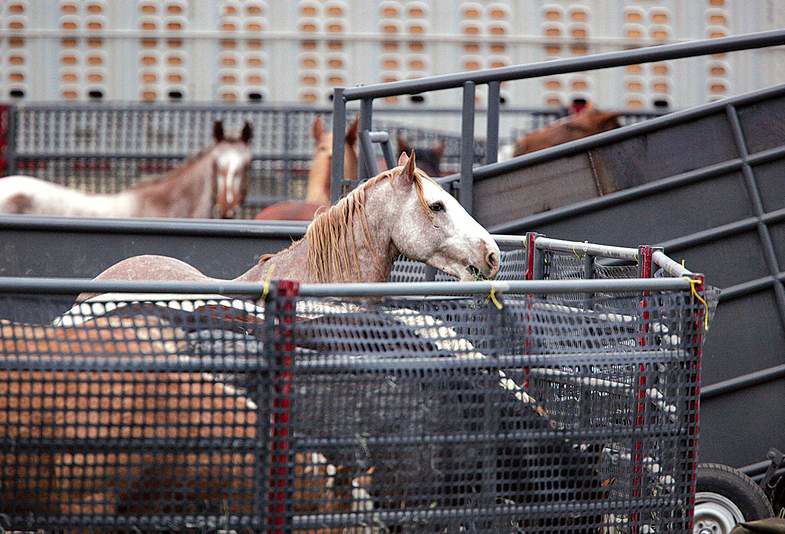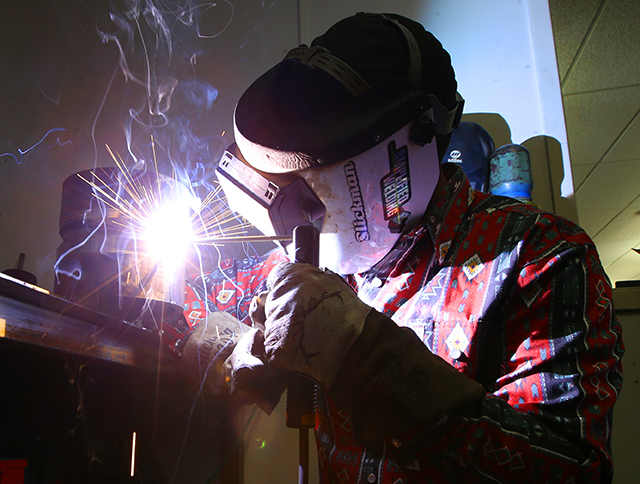BLM rounding up 360 wild horses
Published 4:00 am Sunday, November 7, 2010

- BLM rounding up 360 wild horses
BURNS —
The appaloosa mustang, brown with a white, freckled rump, caught the eye of 16-year-old Katie Westbury.
“Mom, I want that one,” Westbury said.
She and her mother, Tracey Westbury, admired the wild horses that were rounded up and corralled at a temporary facility south of Burns last week. There were buckskins, blue and red roans, pintos and a jet black stallion that reminded Tracey Westbury of a black mustang she had adopted from the same herd.
Nearby, Laura Leigh, an animal welfare activist, wanted to go to the far side of the pen to document foals separated from their mothers. Bureau of Land Management officials said no and kept visitors against a fence and away from the animals.
As the BLM rounds up the Warm Springs herd of wild horses south of Burns this week, it has an attentive audience. Opponents of wild-horse gathers, who want to stop the roundups they see as cruel and unnecessary, came to watch the operation Friday, as did mustang owners who are passionate about the animals and just wanted to watch the gathers for themselves.
“We’re trying to make it transparent as we can,” said Mark Wilkening, spokesman for the BLM out of the Vale District.
The agency is required by law to keep the size of herds under certain levels to keep the habitat and animals healthy, he said. The BLM is responsible for managing about 38,400 wild horses and burros on rangelands across the West. In 2010, it is scheduled to gather 12,000 horses — including about 360 from the Warm Springs herd — sending those that aren’t adopted to long-term pastures in the Midwest.
Population control
The BLM is developing new strategies for managing wild horses and burros, said Tom Gorey, agency spokesman, after a 2008 General Accounting Office report found the program to be unsustainable. In 2010, the BLM’s wild horse and burro program had a budget of almost $64 million, $37 million of which went to holding captured wild animals.
So next month, the BLM plans to publish a summary of a revised wild horse strategy proposal, taking into consideration the 9,000 or so letters and e-mails it received from individuals and groups, Gorey said. Some people want a moratorium on roundups, he said, though the herds grow at a rate of about 20 percent a year.
“The damage to the rangelands would be significant if we didn’t try to control the population,” he said. “It would impact rangeland health to the detriment of habitat to wildlife. It’s just not an alternative.”
For the Warm Springs herd management area in Eastern Oregon, which covers more than 475,000 acres, the agency has set the appropriate herd size at between 111 and 202 horses and burros.
“It’s really big, wide-open country,” said Rob Sharp, rangeland management specialist with the BLM’s Burns District, as he drove across land covered with Idaho fescue and bluegrass, with scattered patches of sagebrush.
And the BLM has to make sure the habitat can support a number of species, including sage grouse, deer, pronghorn and cattle. There are grazing allotments in the area — one section has 7,000 animal unit months (a cow and calf pair grazing for a month).
Wild horses can damage the habitat, he said, because once they find a spot they like, they often graze it for a long time; during drought years, the bands of horses can cluster around a handful of water sources. And unlike cattle, Sharp said, horses are on the range all year and can cause significant damage.
“Until numbers (of horses) are reduced, the impacts keep accelerating,” he said.
Starting Tuesday, contractors for the BLM gathered up all the horses. The plan was to collect them all, hold them in corrals temporarily and then release 96 horses specially selected for age, sex and other characteristics back onto the range.
Some of the mares released would first be treated with birth control, which should prevent them from having foals for two years, Sharp said — the first time for the Warm Springs herd. And 10 of the wild horses released will be geldings.
“It’s just trying to reduce some of the annual birth rate,” he said.
Roundup observation
The first few days of the roundup, contractors gathered about 140 animals, ferrying them to a temporary holding facility where they were sorted.
Contractors use the noise of the helicopters to put pressure on the horses and direct them toward the capture site, Wilkening said, but can’t go too fast or too far so the horses don’t get lathered up or injure themselves.
When they get close to the capture pens, cowboys will station a trained “Judas horse” alongside, letting it loose to run into the corral. The wild horses will follow the trained one, he said.
“Horses are a herd animal; they’ll follow the lead,” Wilkening said.
The Westburys, Leigh and about a half-dozen other observers were waiting in the sagebrush nearby to observe the action.
“I’d like to see this stopped,” Leigh said. “This program needs a serious investigation.”
The herd size limits are set artificially low, as managers say there isn’t enough water for the animals, she said, but grazing numbers are not being reduced and the BLM fast-tracks renewable energy projects that use water on federal lands.
“Wild horses are the tip of the iceberg in how we manage our public land,” she said, calling wild horse management “an American tragedy.”
Horses have died and been injured during the gathers, and Leigh has filed suit related to access to the roundups against the BLM.
“The public has a right to see and react,” she said.
Debbie Coffey, of Southern California, read an article about wild horse gathers in January and has been to several different roundups since. “I feel someone needs to witness what’s happening to our wild horses,” she said.
She’s seen videos of helicopters flying so low that they touch the horses, she said, and heard of horses getting injured or killed in the gathers.
The roundups are cruel and not necessary, said Scott Beckstead, Oregon director and equine protection specialist with the Humane Society of the United States, who was not at Friday’s roundup but follows the issue.
“Horses die during the chase or are killed or die in the holding facilities,” he said.
It is “outrageous,” he said, that the BLM maintains that it needs to remove thousands of horses to protect the land, while there are millions of cows and other livestock permitted to graze.
“We believe the wild horses are a natural part of the wild landscape, and they should be allowed to exist with other wildlife,” he said. “They’re an American icon, and they’re suffering horribly at the hands of the American government.”
While the BLM is in a difficult position and should be given credit for considering other options, Beckstead said, the roundups need to be curtailed in favor of other strategies like treating the animals with contraception.
‘A lot of emotion’
At the gather site Friday, as the helicopter returned to the collection site several times to refuel, some of the observers talked of the wild horses they have adopted and their love of the animals.
“They get in your blood. There’s just a passion there,” Tracey Westbury said.
She gave her daughter a mustang for her 12th birthday, and the family has adopted a number of animals since.
Katie Westbury used to talk about how she would pick out her horse — by flying over a herd with a helicopter and dropping a net on the one she wanted. But the two, from Bellingham, Wash., were there to see how the process really happens.
“We spend a lot of time talking to people who are anti-gather,” Tracey Westbury said. “I need to be here, to witness.”
She didn’t see any being captured Friday — the helicopter pushed the herd about nine miles over the course of the day, but stopped moving them at around 3:30 p.m. while they were still four miles from the gather site.
Andi Harmon, of Burns, said wild horses have been her “heart and soul” since her grandfather threw her on the back of one as a child, and she estimates she’s seen more than 10,000 wild horses on trips to see different herds. She volunteers for the BLM’s horse and burro program, and wrote a book about the animals.
She’s been to gathers before and said she thinks the BLM in Oregon does an “outstanding job” of managing the herds. But still, she said, she doesn’t like it when the horses enter the collection pens and become confused, sometimes fighting with each other.
John Wheland, of Roseburg, adopted a mustang as well. He came to take pictures of the gather, and also to see how his horse got to him.
“There’s a lot of emotion around wild horses,” he said.






